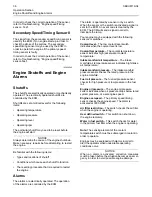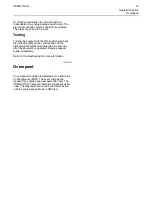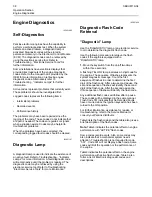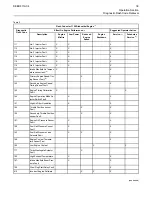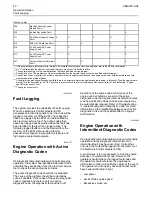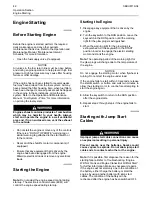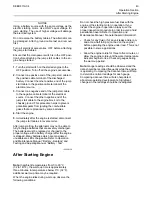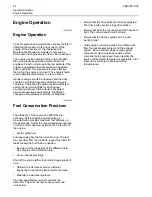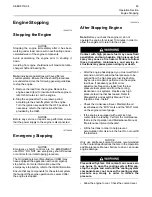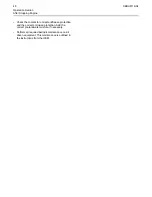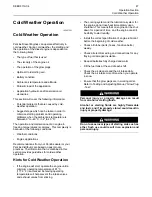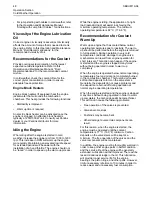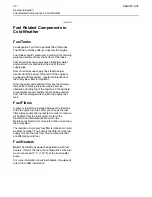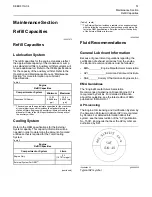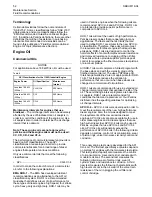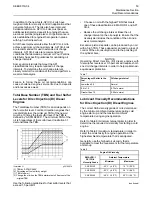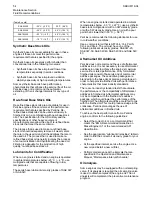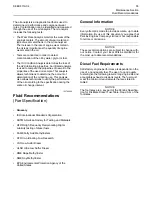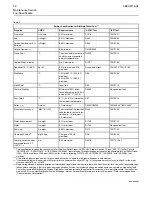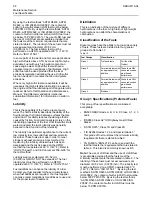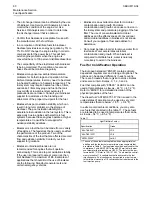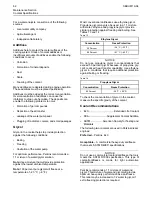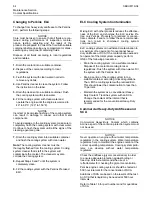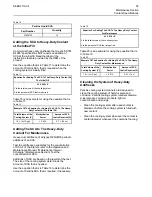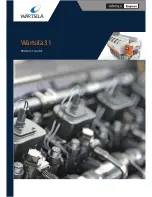
i02323237
Fuel
Related
Components
in
Cold
Weather
Fuel
Tanks
Condensation
can
form
in
partially
filled
fuel
tanks.
Top
off
the
fuel
tanks
after
you
operate
the
engine.
Fuel
tanks
should
contain
some
provision
for
draining
water
and
sediment
from
the
bottom
of
the
tanks.
Some
fuel
tanks
use
supply
pipes
that
allow
water
and
sediment
to
settle
below
the
end
of
the
fuel
supply
pipe.
Some
fuel
tanks
use
supply
lines
that
take
fuel
directly
from
the
bottom
of
the
tank.
If
the
engine
is
equipped
with
this
system,
regular
maintenance
of
the
fuel
system
filter
is
important.
Drain
the
water
and
sediment
from
any
fuel
storage
tank
at
the
following
intervals:
weekly,
service
intervals
and
refueling
of
the
fuel
tank.
This
will
help
prevent
water
and/or
sediment
from
being
pumped
from
the
fuel
storage
tank
and
into
the
engine
fuel
tank.
Fuel
Filters
A
primary
fuel
filter
is
installed
between
the
fuel
tank
and
the
engine
fuel
inlet.
After
you
change
the
fuel
filter,
always
prime
the
fuel
system
in
order
to
remove
air
bubbles
from
the
fuel
system.
Refer
to
the
Operation
and
Maintenance
Manual
in
the
Maintenance
Section
for
more
information
on
priming
the
fuel
system.
The
location
of
a
primary
fuel
filter
is
important
in
cold
weather
operation.
The
primary
fuel
filter
and
the
fuel
supply
line
are
the
most
common
components
that
are
affected
by
cold
fuel.
Fuel
Heaters
Note:
The
OEM
may
equip
the
application
with
fuel
heaters.
If
this
is
the
case,
the
temperature
of
the
fuel
must
not
exceed
73
°C
(163
°F)
at
the
fuel
transfer
pump.
For
more
information
about
fuel
heaters
(if
equipped),
refer
to
the
OEM
information.
50
SEBU8119-04

